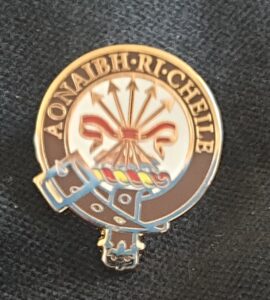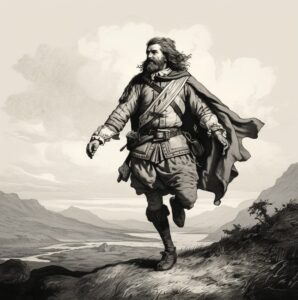The Stevenson family is renowned for its significant contributions to engineering, particularly in the realm of lighthouse construction. This legacy, rooted in the industrious spirit and innovative vision of multiple generations, has had a lasting impact on maritime safety and engineering practices. Their story is one of perseverance, ingenuity, and a deep commitment to public service.
Origins and Early Influences
The Stevenson engineering legacy began in the late 18th century with Thomas Smith, an entrepreneurial and skilled lamp-maker. In 1786, Smith was appointed as the engineer to the newly-formed Northern Lighthouse Board. This appointment marked the beginning of the Stevenson family’s involvement in lighthouse construction, a field that would come to define their professional lives for generations.
Smith’s innovative approach to lighthouse illumination, replacing primitive coal fires with oil lamps and reflectors, significantly improved the effectiveness of lighthouses. His dedication to enhancing maritime safety laid the groundwork for future generations of Stevensons to build upon. Smith’s work was characterized by a practical ingenuity that addressed the pressing needs of his time and set a high standard for his successors.
Robert Stevenson: The Pioneer
Thomas Smith’s stepson, Robert Stevenson, truly elevated the family’s engineering legacy. Born in 1772, Robert was initially destined for the ministry, but his interest in engineering, fostered by his stepfather, led him down a different path. By the age of nineteen, Robert was already superintending the construction of a lighthouse on the isle of Little Cumbrae.
Robert Stevenson’s contributions to lighthouse engineering were groundbreaking. He was involved in the design and construction of numerous lighthouses around Scotland, many of which are still standing today. His most famous work, the Bell Rock Lighthouse, completed in 1811, is an engineering marvel. Built on a submerged reef 11 miles off the coast, the Bell Rock Lighthouse stands as a testament to Robert’s ingenuity, perseverance, and meticulous planning.
Robert’s career was marked by relentless innovation and a profound understanding of both engineering principles and the natural environment. His lighthouses were designed to withstand the harshest conditions, and his pioneering use of materials and construction techniques set new benchmarks in the field. His work ensured that maritime navigation became significantly safer, reducing the incidence of shipwrecks and saving countless lives.
Continuing the Legacy: Alan, David, and Thomas Stevenson
Robert Stevenson’s three sons, Alan, David, and Thomas, followed in their father’s footsteps, each making their own mark on the field of lighthouse engineering.
- Alan Stevenson: Known for his work on the Skerryvore Lighthouse, completed in 1844, which was one of the tallest and most powerful lighthouses of its time. Alan’s meticulous attention to detail and commitment to innovation were evident in the design and construction of this lighthouse, which remains a significant achievement in civil engineering.
- David Stevenson: Along with his brother Thomas, David was responsible for the design and construction of over thirty lighthouses, contributing significantly to the safety of maritime navigation around Scotland. David’s work was characterized by a keen understanding of the technological advancements of his time and a dedication to improving the efficiency and effectiveness of lighthouse operations.
- Thomas Stevenson: In addition to his engineering work, Thomas is notable for being the father of the famous author Robert Louis Stevenson. Thomas’s designs were characterized by their robustness and innovation, ensuring that the lighthouses could withstand the harshest maritime conditions. His contributions to the family legacy include not only his engineering feats but also his influence on his son’s literary career.
The Impact on Maritime Safety
The Stevensons’ contributions to lighthouse engineering cannot be overstated. Their work significantly improved the safety of maritime navigation, reducing the number of shipwrecks and saving countless lives. The lighthouses they designed were often situated in remote and perilous locations, where their presence was crucial for guiding ships safely through treacherous waters.
The family’s meticulous approach to construction, their innovative use of materials, and their commitment to maintenance and improvement set new standards in lighthouse engineering. Their lighthouses were not only functional but also aesthetically pleasing, blending seamlessly with the natural landscapes. This aesthetic consideration, combined with their engineering prowess, ensured that their lighthouses became iconic structures, celebrated for both their utility and their beauty.
Challenges and Triumphs
Building lighthouses in the 19th century was fraught with challenges. The Stevensons often had to work in inhospitable environments, facing harsh weather conditions, and navigating logistical difficulties. Their ability to overcome these challenges is a testament to their ingenuity and determination. For example, the construction of the Bell Rock Lighthouse involved innovative techniques such as the use of interlocking stone blocks to ensure stability against powerful sea waves.
Their work required not only technical skill but also a profound understanding of the natural forces at play. The Stevensons’ ability to combine scientific principles with practical application was a key factor in their success. Their lighthouses were engineered to withstand the test of time and the elements, many of them still standing and operational today.
A Legacy of Innovation and Dedication
The Stevenson engineers exemplify the spirit of innovation and dedication. Their work, spanning over a century, reflects a deep commitment to public service and a relentless pursuit of excellence. The principles they established in lighthouse design and construction have influenced engineering practices far beyond their field.
Moreover, the Stevenson family’s legacy extends into literature and culture through the works of Robert Louis Stevenson, whose writings often reflect the adventurous spirit and technical prowess of his forebears. The younger Stevenson’s novels, such as “Treasure Island” and “Kidnapped,” are imbued with the same sense of adventure and ingenuity that characterized his family’s engineering achievements.
Adapted From: Stevenson, R. L. (1912). Records of a family of engineers. Chatto & Windus.

 The association has purchased a number of Clan Cameron Badges that are available for NCCA association members for a donation of $20.00 plus $10.00 postage.
The association has purchased a number of Clan Cameron Badges that are available for NCCA association members for a donation of $20.00 plus $10.00 postage.














